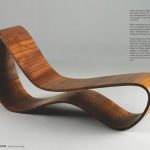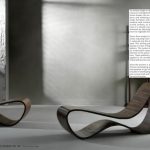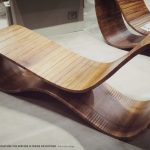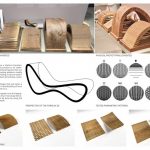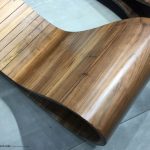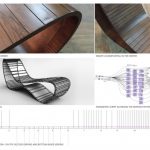Smart Lounger integrates material intelligence with parametric tools and techniques to create a seamless amalgamation of form, structure and material. The design is not form oriented by rather process oriented.
First Award | RTFA 2017 Awards
Category: Product Design (Built)

| Project Details | |
| Studio Name: | Studio Symbiosis |
| Team Members: | Studio Symbiosis and Godrej DesignLAB Amit Gupta Henry Skupniewicz Khushnuma Jamasji Kartik Nitish |
| Country: | India |
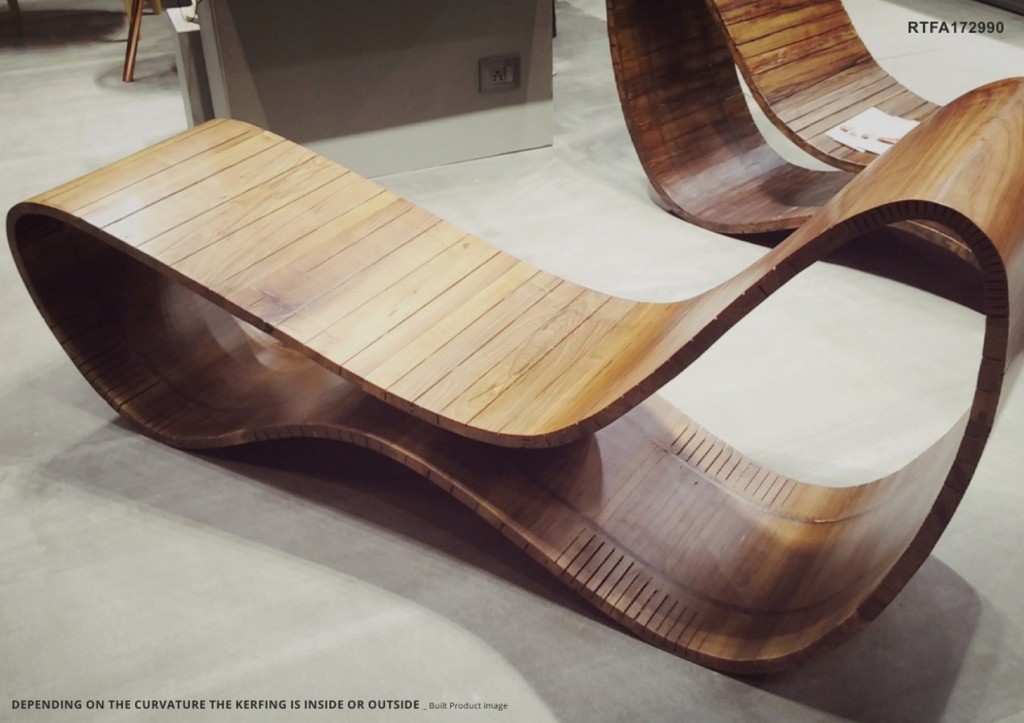
©Studio Symbiosis
With contemporary techniques there is a lot of focus on complex manufacturing processes. These are quite energy burdened and result in wastage of material. We wanted to use this technique of kerfing, study and develop it using modern tools.
Sustainability is at the epicentre of the product. The design intent was to investigate kerfing as a technique for creating curved forms with minimal wastage. This was achieved through coding and iterative loops by stress analysis and generating the kerfing pattern accordingly. There is minimal wastage of material in the product to create a contemporary shape and the technique allows enough strength in the wood that is can take the load of a person sitting on it.
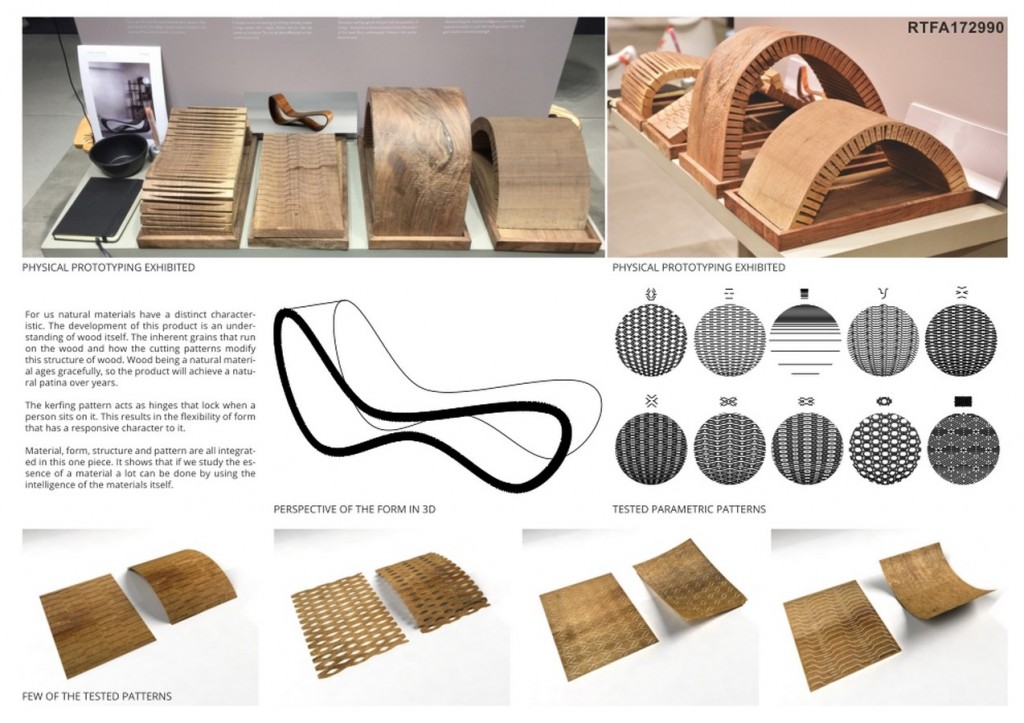
©Studio Symbiosis
To achieve single or double curved surfaces material resource management is not possible. With Kerfing these shapes can be created by optimizing the patterns and achieving these complex forms.
“Lattice hinge formation technique” if deployed on a rigid material with minimal plasticity will result in single curved surfaces, as achieved in Smart Lounger. In case of a double curved surface the design can be achieved by adjusting the pattern, which opens up more to negotiate the curvature.
Stress flow analysis has been computed, and in the areas requiring more curvature the excess material is removed and the density of the pattern is generated. This kerfing pattern transforms from closely spaced in areas of high curvature to a more gradual pattern. This system of scoring of lines not only acts as a fabrication system but also gives an aesthetic element to the piece which is coming from the process.
These patterns generated on a 3d model, are applied to an unrolled surface that could be easily milled without the use of complex machinery.
Since the process is driven by material intelligence, intense prototyping was done and the results were recomputed to get the iterative patterns. This loop resulted in developing the kerfing technique beyond just a visual craft and to an integration of formal and structural system.

©Studio Symbiosis
For us natural materials have a distinct characteristic. The development of this product is an understanding of wood itself. The inherent grains that run on the wood and how the cutting patterns modify this structure of wood. Wood being a natural material ages gracefully, so the product will achieve a natural patina over years.
The kerfing pattern acts as hinges that lock when a person sits on it. This results in the flexibility of form that has a responsive character to it.
Material, form, structure and pattern are all integrated in this one piece. It shows that if we study the essence of a material a lot can be done by using the intelligence of the materials itself.
- ©Studio Symbiosis
- ©Studio Symbiosis
- ©Studio Symbiosis
